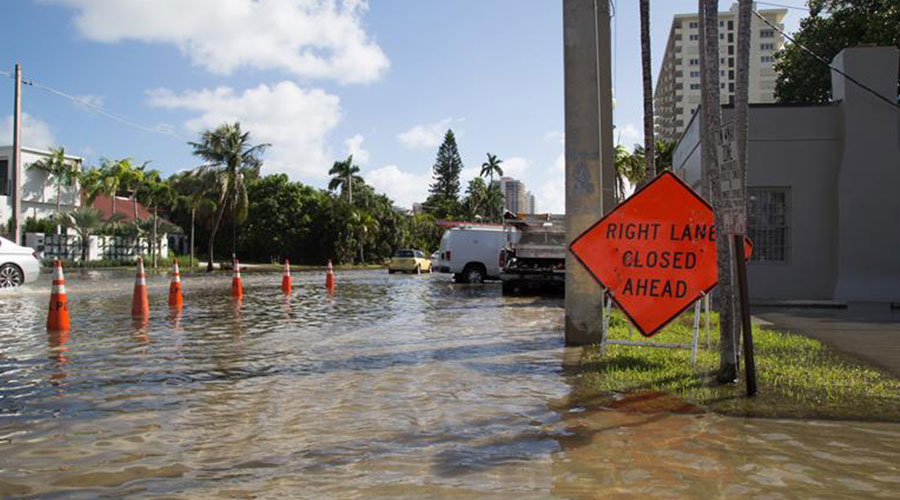How to Prepare for Summer Storm Season
Check out this storm preparedness checklist for building owners and property managers to secure their properties during this year’s tornado and active hurricane season.
When it comes to storms, you can’t always expect the unexpected. However, you can better prepare your facilities by instituting a proactive plan. As we enter a period of seasonal storms, including hurricanes and tornadoes, it’s imperative that building owners and property managers start preparing now.
According to The National Severe Storms Laboratory, about 1,200 tornadoes hit the United States on an annual basis. The prime time for tornadoes to hit the Plains and Midwest is from May to July. Although tornadoes can leave devastating effects on properties, with the right protocol, building owners and property managers may be able to minimize risk and damage.
Preparedness starts and ends with proper training. Property managers should be up-to-date on their local emergency weather resources and alerts before and during the storm. Training that focuses on tornado response both on and off the site in relation to management, maintenance, security, and housekeeping, should be thoroughly communicated to teams. These include:
- Building shut down procedures.
- Gathering of emergency supplies, such as: plywood, studs, generators, pumps, nails, tape, sheeting, tarp, extension cords, and more.
- Understanding where to go in time of emergency, including knowing where all emergency exits are located and by identifying primary, secondary, and tertiary safety zones.
- Check elevators and other key mechanics and ensure proper use.
- Create a plan that quickly removes outside equipment and furniture, fixtures, and equipment that may become projectiles.
Communication is critical. It’s important to deliver clear and concise instructions to tenants. Ensure their notifications and alerts are accurate and current, and during times of emergencies, participate in directing patrons and employees to designated safe areas.
After a tornado or storm, it’s time to pick up the pieces. The key is to immediately respond and ensure tenants that have been sheltered in place have a safe way to exit the property. In addition, property managers should implement the following checklist:
• Check the entire building and evaluate the level of damage. Is it safe for people to return to the building? Do you need to temporarily shut off accessibility to the property?
• Work together with the landlord or building owner on next steps and the needs of an approved emergency restoration provider.
Additionally, the National Oceanic and Atmospheric Administration (NOAA) has predicted another above-average active hurricane season. For buildings positioned in coastal regions and areas susceptible to hurricanes, you should have already done the following:
- Created an Emergency Response Manual with print outs available.
- Update call lists and ensure notification systems are working properly.
- Confirm and update vendor contracts if necessary: This means restoration vendors, including emergency security support, catastrophic response, landscapers, etc.
- Be up to date on tracking storms. You can receive storm updates by subscribing to NOAA alerts.
Upon notification that a hurricane or tropical storm is brewing, it’s time to get to work. Beginning preparation during the storm is too late, which is why it’s critical to keep an eye on alerts and notifications. Before the storm hits:
- Wrap trash receptacles and pull compactors.
- Remove outdoor common area items that can become airborne.
- Work with your vendors to check roofing, gutters, and HVAC units. Also check sump pumps, confirm rain diversion systems, and ensure drains/gutters are clear.
- “Boot” or trim palm trees to remove diseased limbs, lift canopy and remove “sail” to avoid falling trees and debris.
- Always document and photograph before the storm hits and review all policies with insurance providers and emergency response teams.
- Stay in contact with tenants and vendors – again, communication is critical.
- Pack back-up supplies like batteries for handheld devices. In the event of cell phone service loss, try texting, as that service often remains a viable alternative even if phone calls are not possible.
With the right preparation, building owners and property managers should feel better equipped to start the latter process. After the storm, wait until the NOAA confirms safe conditions. Upon confirmation, assess the property by utilizing the photos and write-ups completed during the initial preparation phase and take new photos. Connect with the landlord and report findings and suggested steps to have the property back up and running safely.
Navigating storm seasons is always challenging but remaining proactive will help streamline processes and minimize damage. Property managers are equipped with the skills and training to handle a variety of emergencies and are building owners’ best partners. Together, property managers and building owners can enforce a better-protected environment, no matter what the world throws at them, with the right steps in place.
Barry Wood is director, operations at JLL.
Related Topics:











